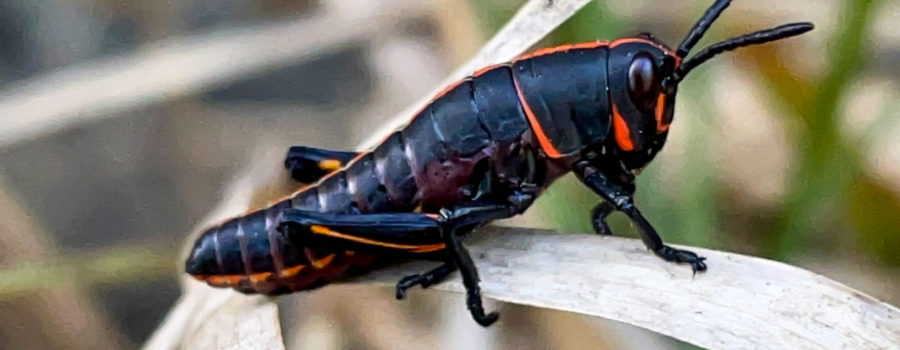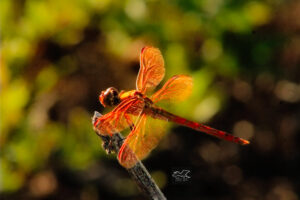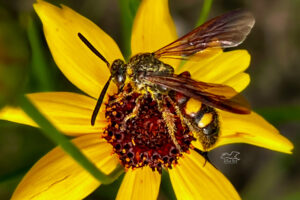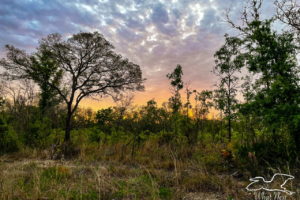These Beautiful Eastern Lubber Grasshopper Nymphs Were a Great Surprise

Earlier this spring (in March to be exact), I was outside looking for caterpillars on the early passion fruit vines and when I was walking around in the grass, I noticed quite a few small insects hopping around. When I looked at them more closely, I saw that they were a bunch of small, black grasshoppers. They were quite pretty being mostly a shiny black, but with a red line down the back and some red and yellow highlights on the body and legs. There were quite a few of them on various plants in the area, and overall, they really didn’t seem to mind me as long as I wasn’t going to step on them. I know we have quite a few types of grasshoppers, here in Florida, but I didn’t recognize this one, and I was definitely surprised to see so many so early in the season.

A little bit of research quickly made me realize why I didn’t recognize them, and also why I was seeing them so early. They were first instars of the Eastern lubber grasshopper, also known as the Florida lubber. The adults tend to be mostly yellow or orange, although there is also a melanic (black) color variation (which I have obviously never seen!). These little guys had just hatched out within the past few days and I suspect they were hungry, which is why they were hanging out near the passion fruit plants (that area of the yard has plenty of grass and several types of flowering plants besides just the passion fruit). They are pretty social insects, especially as nymphs, so it’s not unusual to see a bunch of them at once. These guys will go through five molts or instars before reaching maturity some time in late June or July. Once they reach maturity, they will be one of the largest grasshoppers in the United States (which is why they are often bred in captivity for use anatomy and dissection classes).

Eastern lubbers have a very limited range which runs from North Carolina south through Florida and west out into central Texas. Their preferred habitat is low, moist areas along the edges of wooded areas or in pastures or fields. They will eat a large variety of plants, and because of that, and the fact that they tend to move in groups, means that they can be quite damaging to certain crops including peanuts, citrus trees, certain vegetables, and garden plants. They are adept climbers, so getting into trees or the tops of plants is no problem for them. Generally, they cause leaf damage by eating holes in them, but if their numbers are big enough, they can completely strip a plant of all foliage.

This particular group of baby grasshoppers hung around here for a few days and nibbled on some of the passion fruit vine leaves, some of the surrounding grasses, and maybe some of the flowers before they disappeared, probably off into the surrounding woods. The damage that they did to the plants was minimal and in fact, quite a bit less than many of the caterpillars do. I’ve always pretty much tried to live and let live, and I really enjoyed getting to see the grasshopper nymphs, so I don’t mind if they ate a few leaves. Besides, mine is a yard for nature and dogs and it will never win any Better Homes and Gardens awards!






Recent Comments